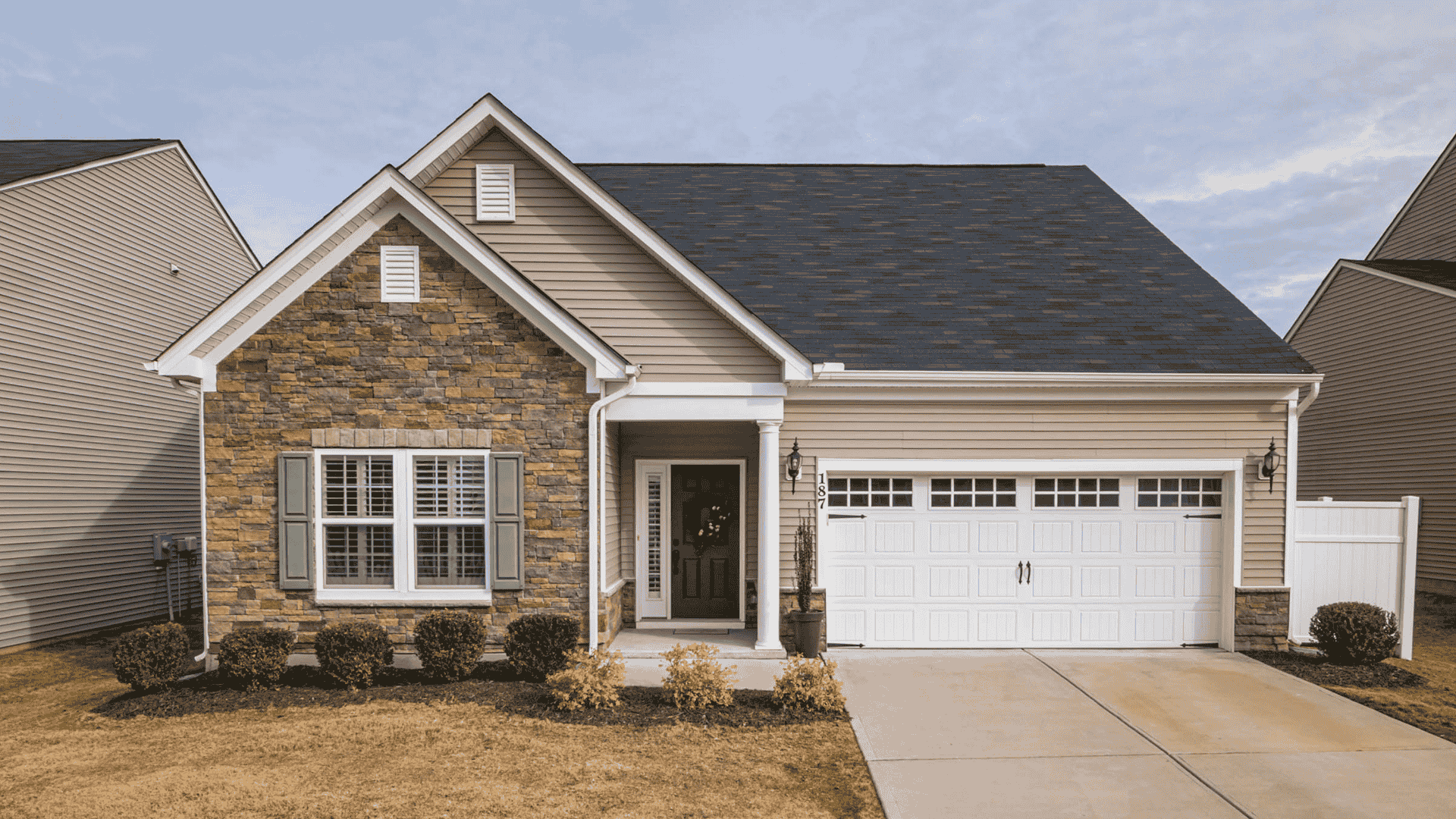10 U.S. States Where Single Income Buyers can Afford Homes
Housing Affordability: Single Income Buyers Can Afford to Buy Homes in These 10 U.S. States
FREE DOWNLOAD: 10 Costly Mistakes Foreigners Make Buying U.S. Real Estate
For international real estate investors, understanding who can afford to buy a home in the U.S. is very important. It tells you a lot about the rental market. Many Americans now find it harder to buy a home with just one income. This is changing the U.S. housing market. It creates new chances for U.S. property investment and securing consistent cash flow.
This article explains the challenges for single-income homebuyers. We will look at how this trend impacts the overall housing market. And we will explore smart ways for you, as an international investor, to find profitable cash flow rentals.
Investment Properties: Browse Turnkey Rental Properties in our Online Portal
Key Takeaways: Single-Income Affordability & Investor Strategy
- Growing Challenge: Buying a home on a single income is increasingly difficult in many U.S. cities due to high prices and mortgage rates.
- “Comfortable Living” Benchmark: A recent study reveals the pre-tax income needed for a single adult to live comfortably in each U.S. state, based on the 50/30/20 budget rule.
- Boosts Rental Demand: As fewer people can buy, more people need to rent. This increases demand for rental properties.
- Strategic Market Selection: International investors can target markets where affordability is stretched, leading to a larger pool of potential renters.
- Focus on Smaller Units: Properties suitable for single individuals or smaller households may see stronger rental demand.
- Cash Flow is Key: In this environment, securing consistent cash flow from rentals becomes even more vital for your investment success.
- Demographic Shifts: Pay attention to demographics. More single-person households or young professionals contribute to rental demand.
Related: Investors are Buying More Homes in These Affordable Housing Markets
The Rising Challenge for Single-Income Homebuyers in the U.S.
Buying a home has always been a big step. For many years, a single income could often be enough. Today, this is much harder. High home prices and high mortgage rates are making it tough.
The Affordability Gap and “Living Comfortably”
The median price of a U.S. home has risen significantly. At the same time, mortgage rates have climbed. This means monthly mortgage payments are much higher than they used to be. For a household relying on just one salary, meeting these costs can be a major hurdle.
A recent study by SmartAsset sheds light on the salary required for a single adult to “live comfortably” in each U.S. state. This study defines comfortable living using the 50/30/20 budget rule:
- 50% of income: Goes to necessities (like housing, food, transportation).
- 30% of income: Goes to discretionary spending (like entertainment, dining out).
- 20% of income: Goes to long-term goals (like savings, debt repayment).
SmartAsset’s 2025 study, using data from the MIT Living Wage Calculator, shows the pre-tax income needed to meet these benchmarks.
States Where Single-Income Living Is Most Affordable (Lowest Income Needed for Comfort)
Understanding where it’s financially easier to live on a single income can highlight areas with a different set of challenges or opportunities for rental demand. This table shows states with the lowest income needed for a single person to live comfortably.
| State | Income Needed for Single Person |
|---|---|
| West Virginia | $80,829 |
| Arkansas | $81,078 |
| South Dakota | $82,160 |
| North Dakota | $82,285 |
| Kentucky | $83,574 |
| Oklahoma | $84,282 |
| Ohio | $84,781 |
| Alabama | $85,280 |
| Louisiana | $85,322 |
| Mississippi | $86,320 |
Data Source: SmartAsset’s “Salary Needed to Live Comfortably by State – 2025 Study” (https://smartasset.com/data-studies/state-salary-living-comfortably-2025).
Conversely, the study notes that Hawaii is the most expensive state for a single adult to live comfortably, requiring a salary of $124,467. This wide range underscores the varied economic landscapes across the U.S.
Who is Affected?
This trend affects various groups:
- Young Professionals: Starting careers with student debt and single incomes makes homeownership difficult.
- Single Adults: Whether never married, divorced, or widowed, buying alone is a financial stretch.
- Lower to Middle-Income Earners: Even with a stable job, the income needed to qualify for a mortgage can be out of reach.
This growing difficulty means a larger portion of the population will likely remain renters for longer.
Related: The 20 Most Affordable U.S. Cities for Renters in 2025
How This Impacts the U.S. Housing Market for Investors
The struggles of single-income buyers directly affect the broader housing market. For international real estate investors, this shift creates a clear trend: increased demand for rental properties.
Less Competition for Buyers in Some Areas, More Renters Everywhere
When fewer people can afford to buy, the pool of active homebuyers shrinks. In certain areas, this can lead to:
- Slower Home Price Growth: Less demand from buyers means prices might not rise as quickly, or they could even adjust downwards.
- More Homes on the Market: Homes might stay on the market longer. This gives buyers more options and negotiation power.
However, the most significant impact for international investors is on the rental market:
- Increased Rental Demand: If buying is out of reach, people still need a place to live. This drives up demand for rental homes and apartments.
- Stable Rental Income: Higher rental demand can lead to stable occupancy rates and potential for steady rent growth. This is crucial for consistent cash flow rentals.
- Demographic Push: There’s also a growing number of single-person households in the U.S. These individuals are more likely to rent. This adds to the existing demand.
This dynamic means that while the buying side of the market might slow, the rental side can remain robust.
Related: The Best U.S. Real Estate Markets for non-Resident Investors in 2025
Strategic Opportunities for International Investors
The challenge of single-income affordability in the U.S. housing market creates strategic opportunities for international real estate investors. You can target specific markets and property types to maximize your consistent cash flow.
Targeting “Renter-Heavy” Markets
Focus your U.S. property investment in areas where:
- High Affordability Challenges: Cities where home prices are high relative to local incomes, making homeownership difficult for many.
- Strong Population Growth: Areas attracting new residents, especially those who may initially rent.
- Diverse Job Markets: Cities with stable and growing employment bases ensure a consistent pool of renters.
- Good Public Transit/Walkability: Urban or suburban areas with good infrastructure can be attractive to renters, especially single individuals who may not own cars.
Ideal Property Types for Single-Income Renters
Consider properties that appeal to individuals or smaller households:
- Smaller Single-Family Homes: These are often more affordable to rent and maintain.
- Condos and Townhomes: These units often provide amenities and a lower maintenance lifestyle, attractive to single renters.
- Duplexes or Triplexes: Multi-family properties can be excellent for cash flow. They allow you to rent out multiple units, often to single individuals or small families.
Related: Top 10 U.S. Cities Where Rents are Getting More Expensive
The Importance of Cash Flow
In a market where home price appreciation might slow due to affordability issues, consistent cash flow from rentals becomes paramount. Your focus should be on properties that generate strong monthly income after all expenses.
This means:
- Rigorous Financial Analysis: Calculate your potential rental income, subtract all operating expenses (mortgage, taxes, insurance, maintenance, property management fees), and ensure a healthy net operating income.
- Long-Term Strategy: U.S. property investment for cash flow rentals is a long-term play. Market fluctuations will occur, but consistent rental income can provide stability.
By understanding these trends, international investors can make smart, data-driven decisions. You can capitalize on the growing demand for rentals. This leads to a stronger, more predictable cash flow from your U.S. real estate portfolio.
Related: U.S Housing Market Forecast 2025 to 2030
Conclusion: Adapting to New Market Realities
The increasing difficulty for single-income earners to buy homes is reshaping the U.S. housing market. This shift reduces the pool of potential homebuyers in many areas. But it significantly boosts demand for rental properties.
For international real estate investors, this creates a clear pathway to profitable U.S. property investment. By strategically targeting markets with affordability challenges and focusing on property types that appeal to single renters or smaller households, you can secure consistent cash flow rentals. Adapting your strategy to these new market realities is key to long-term success in U.S. real estate.
Previous Article: Is the California Housing Market Crashing in 2025?
GROW YOUR WEALTH WITH U.S. REAL ESTATE
Start your U.S. real estate investment journey today with high-quality cashflow real estate. Book a Free 1-2-1 Discovery Call with a member of our senior management team to discuss your personalized strategy.
“Having personally invested in over 120 US rental properties from overseas, I know the true value of getting the right advice and support.
David Garner – Cashflow Rentals
GROW YOUR WEALTH WITH U.S. REAL ESTATE
Start your US real estate investment journey today, and book a Free 1-2-1 Discovery Call with a member of our senior management team.
“Having personally invested in over 120 US rental properties from overseas, I know the true value of getting the right advice and support.
David Garner – Cashflow Rentals

Frequently Asked Questions (FAQs) About Single-Income Home Affordability for Investors
Q1: How is single-income home affordability changing in the U.S. today?
A1: It’s becoming much harder for individuals to buy a home on a single income. This is due to high home prices and elevated mortgage rates, making monthly payments a significant financial burden.
A2: This trend increases demand for rental properties, as more people are priced out of homeownership. This creates a larger pool of potential tenants and can lead to more stable consistent cash flow for rental property owners.
Q3: Which types of properties should international investors consider for this trend?
A3: Investors should consider smaller single-family homes, condos, townhomes, and multi-family properties (like duplexes or triplexes). These are often more affordable rental options that appeal to single individuals or smaller households.
Q4: How can international investors find the best markets for cash flow rentals based on this trend?
A4: Look for markets with significant affordability challenges for buyers, strong population growth, and diverse job markets. These areas will likely have a high and sustained demand for rental housing.
Q5: Is it still possible to achieve consistent cash flow in the U.S. housing market with these challenges?
A5: Yes, absolutely. By understanding the shift towards a renter-dominant market and focusing on properties that can generate strong rental income relative to their costs, international investors can secure and maintain consistent cash flow from their U.S. real estate investments.







![USA Property Investment for Foreign Buyers [2025 Guide]](https://cashflowrentals.net/wp-content/uploads/2025/07/USA-Property-Investment-for-Foreigners-Expert-2025-Guide-500x383.png)



